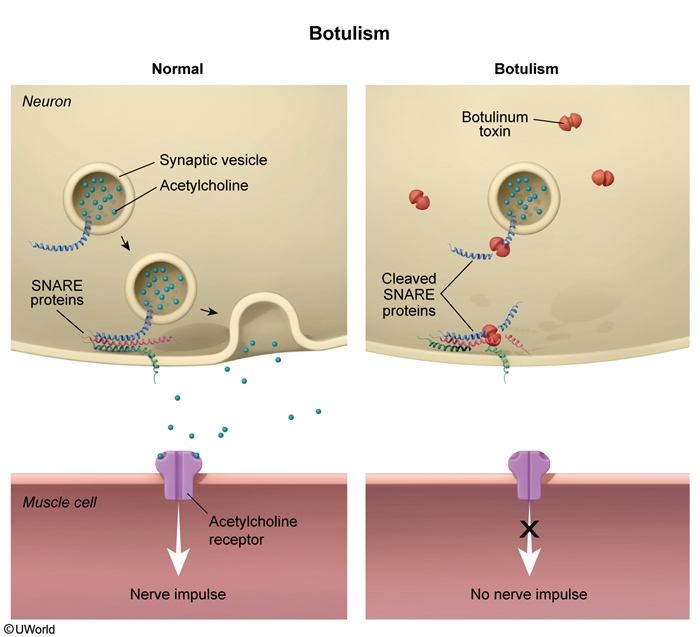Botulism
Article Sections
Introduction
Botulism is a rare but serious paralytic illness caused by neurotoxins produced by the bacterium Clostridium botulinum.
Pathophysiology
C botulinum is a gram-positive, anaerobic bacillus that synthesizes botulinum toxin, a highly potent toxin that can be lethal in small quantities. The toxin enters the nerve terminals through endocytosis, where it prevents binding and fusion of acetylcholine-containing synaptic vesicles with the plasma membrane through the destruction of SNARE proteins (Figure 1). This inhibits the presynaptic release of acetylcholine from the nerve terminal at the neuromuscular junction, which prevents both nicotinic and muscarinic receptor activation, leading to skeletal muscle weakness and reduced glandular secretions, respectively.
C botulinum forms spores, which allow the bacteria to survive adverse conditions (eg, heat). Spores are typically isolated from environmental dust/soil (particularly where soil is disturbed such as agricultural areas) and various foods, including raw honey, seafood, fruits, and vegetables. The anaerobic environment within certain foods that are fermented, preserved, or canned at home (where improper processing can lead to contamination by viable
Continue Learning with UWorld
Get the full Botulism article plus rich visuals, real-world cases, and in-depth insights from medical experts, all available through the UWorld Medical Library.
Figures
